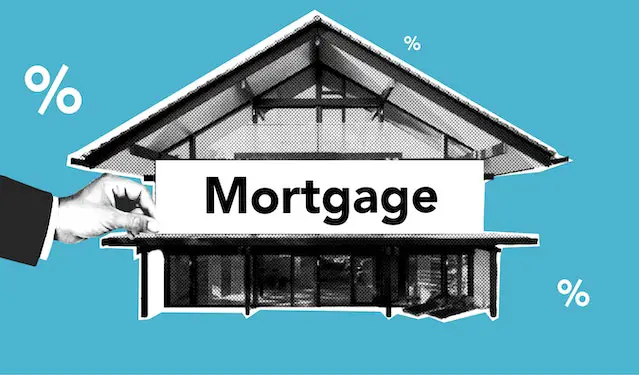Syndication involves a group of investors pooling their funds together to provide financing for a project or venture, while securitization involves the pooling of assets such as mortgages, loans or other debts into securities that can be sold to investors.
Syndication
(Photo By SME Loans on Flickr)

Syndication is a process in which multiple financial institutions come together to provide funding for a large-scale project or investment. In simple terms, it involves pooling resources from different lenders to finance a single venture. This can be beneficial for both the borrower and lenders.
One of the advantages of syndication is that it allows borrowers to access larger amounts of capital than they would be able to secure from a single lender. It also reduces the risk for each individual lender since they are only providing a portion of the total funding.
However, there are some downsides to syndication as well. For one, it can be time-consuming and complex since there are many parties involved in the lending process. Additionally, borrowers may have less negotiating power when dealing with multiple lenders who all have their own requirements and preferences.
Syndication can be an effective way for businesses and other organizations to secure funding for large projects or investments while spreading out risk among multiple lenders.
Securitization
(Photo by Monstera)

Securitization is a process where financial institutions package different types of assets such as loans, mortgages, and credit card receivables into securities that can be sold to investors. These securities are backed by the cash flows generated by the underlying assets.
There are three main types of securitization: asset-backed securities (ABS), mortgage-backed securities (MBS), and collateralized debt obligations (CDOs). ABS represents pools of consumer or commercial loans while MBS represent pools of residential or commercial real estate loans. CDOs combine various types of debt instruments such as bonds, loans, and other structured finance products.
One key advantage of securitization is that it allows financial institutions to free up capital for lending purposes. By selling off their loan portfolios in the form of securitized products, they can obtain funds from investors who purchase these securities. Additionally, issuing these securities also diversifies their sources of funding.
However, there are also disadvantages associated with securitization. One major concern is that it can lead to an increase in risk-taking behavior since originators may not have incentives to properly assess borrower creditworthiness once they have sold off their loan portfolios. Moreover, if borrowers default on their payments this could cause significant losses for investors who hold these securities.
While securitization has many advantages it’s important for regulators to ensure adequate transparency and risk management frameworks exist so as to prevent excessive risk-taking behaviors from arising within the financial system.
Syndication Vs. Securitization – Key differences
Syndication and securitization are two financing techniques that are commonly used in the business world. While they may seem similar, there are important differences between them.
Syndication involves a group of lenders coming together to provide funding for a single borrower. The loan is typically large, and it would be difficult for any one lender to provide the entire amount on their own. Syndication allows lenders to spread their risk while still participating in a profitable deal.
Securitization, on the other hand, involves pooling assets like loans or mortgages into a trust that issues securities backed by those assets. These securities can then be sold to investors who earn interest payments based on the underlying assets’ performance.
The main difference between syndication and securitization lies in how the funds are raised. In syndication, funds come directly from lenders whereas with securitization, funds come from selling securities backed by pooled assets.
Another key difference is that syndicated loans often have more flexible terms than securitized debt instruments because of greater negotiation power among borrowers with multiple parties involved in lending decisions.
Ultimately, both syndication and securitization offer unique advantages depending on the situation at hand. Understanding these differences can help businesses choose which financing technique best suits their needs.
The advantages and disadvantages of syndication
When a group of investors pool their resources together to finance a project, it’s called syndication. This type of financing can be beneficial for both the borrower and the lenders involved.
One advantage of syndication is that it allows borrowers to access more capital than they would be able to on their own. By pooling funds from multiple lenders, borrowers can secure larger loans with better terms and lower interest rates.
Another benefit is that syndicates often involve experienced investors who can provide valuable advice and guidance throughout the project. This expertise can help ensure the success of the venture.
However, there are also some drawbacks to consider when participating in a syndicate. One disadvantage is that decision-making power may become diluted as more parties are involved in financing decisions. Additionally, disagreements between members or changes in circumstances could lead to delays or disruptions in funding.
One potential downside is that obtaining financing through a syndicate may require sharing equity with other investors which could impact long-term profitability for any given individual investor.
The advantages and disadvantages of securitization
Securitization is the process of converting various types of assets such as mortgages, loans or other receivables into securities that can be sold to investors. The securitized assets are then pooled together and divided into smaller portions for sale, which spreads the risk among multiple investors.
One significant advantage of securitization is that it provides an additional source of funding for financial institutions or companies. By selling their assets in the form of securities, they can raise money without taking on additional debt or equity financing.
Another benefit is that through securitization, banks and other lenders can reduce their exposure to certain risks associated with holding these assets on their balance sheets. This results in a more diversified portfolio and reduces concentration risk.
However, there are also some disadvantages to securitization. One potential drawback is that it may lead to a lack of transparency as investors may not have access to all relevant information about underlying assets within these securities. This could potentially increase risk if borrowers default on loans or mortgages included in the pool.
Additionally, securitized products have been subject to criticism due to concerns over how they contributed significantly to the 2008 global financial crisis by spreading systemic risk throughout markets worldwide.
While there are advantages and disadvantages associated with securitization, its use remains popular among many industries seeking alternative financing options.
What is difference between syndication and consortium?
Syndication and consortium are two terms that are often used interchangeably, but they have different meanings. Syndication refers to a group of lenders who come together to provide a loan to a borrower. These lenders share the risk and reward of the loan, and each lender typically contributes a portion of the total amount.
On the other hand, a consortium is also a group of companies or individuals who collaborate on a project or investment. However, unlike syndication, there is no lending involved in consortiums. Instead, members work together to achieve common goals.
Another key difference between syndication and consortium is their structure. In syndications, one lender usually takes the lead role as agent and manages communication between all parties involved. In contrast, consortiums tend to be more decentralized with multiple parties taking on leadership roles.
While both syndications and consortia involve collaboration among multiple entities for mutual benefit or gain – whether it’s through lending or joint ventures – they differ in their specific structures and purposes.
What are the three types of securitization?
Securitization is a process of pooling various types of financial assets, such as mortgages or loans, into a single pool and issuing securities backed by these assets to investors. There are three main types of securitization: asset-backed securities (ABS), mortgage-backed securities (MBS), and collateralized debt obligations (CDOs).
Asset-backed securities are created when pools of non-mortgage assets such as car loans, credit card receivables or student loans are packaged together and sold as bonds to investors. Generally speaking, ABS tend to be less risky than MBS since they have shorter maturities.
Mortgage-backed securities involve pooling residential or commercial mortgages and selling the cash flows from those mortgages to investors in the form of bonds. These can be relatively safe investments but carry some risk depending on the quality of the underlying mortgages.
Collateralized debt obligations refer to complex instruments that package together various kinds of debt, including mortgage bonds and corporate bonds. They can be particularly difficult for individual investors to understand due to their complexity.
Securitization has become an important tool for financial institutions seeking liquidity while mitigating risk through asset diversification across multiple classes with varying degrees of risks associated with them.
Featured Image By – Raten-Kauf from Pixabay








